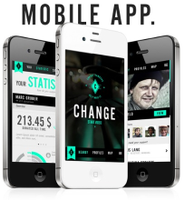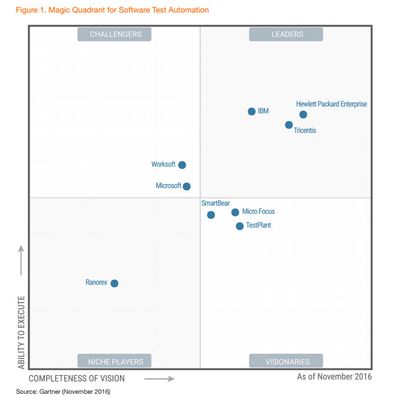Why does Software Test Automation matter, now more than ever?
Everywhere we turn, in every media from newscasts to social media, to airplane magazines, we are bombarded with stories of new digital innovation. Organizations seek to deploy disruptive, technology fueled business models and continuously release visionary and innovative solutions designed to delight customers, while avoiding technology and operational failures that stop business disruption and subsequent success in their tracks.
It can be the difference between customers experiencing this:

Or this:

At HPE Software, we constantly engage with our customers and partners about what digital success looks like in 2016 and beyond. We see a common theme – it’s about attaining that elusive balance of speed of delivery, quality including creating an amazing digital user experience, and the ability to scale – whether it be remarkable performance with millions of users or a right-time experience across exploding numbers of device types and operating environments.
How do application teams get ahead of speed, quality and scale? By continuously enabling quality throughout the delivery lifecycle. And this only happens with generous use of software test automation.
Gartner, Inc. continuously engages their clients and they are also hearing about the strong need to increase the use of Software Test Automation. This is reflected in their newly published Magic Quadrant for Software Test Automation, which frames this market and explores what it takes to be a leader. In this Magic Quadrant, Gartner states:
“The need to support faster time to market with higher quality is driving the demand for effective functional test automation tools. We evaluate vendors in this space to help application leaders who are modernizing software development select test automation tools that best match their needs.”
And HPE Software is pleased to participate in this important set of market analysis and demonstrate our leadership in software test automation. See the Magic Quadrant image below:

How does the Magic Quadrant define the market for Software Test Automation?
Gartner describes functional testing as a form of testing that deals with how apps function.
“A functional software test automation tool enables an organization to design, develop, maintain, manage, execute and analyze automated functional tests for applications running on different platforms (including desktop, web and mobile). These tools can run automated functional tests by driving the user interface (UI) of an application (UI test automation), or interact with the application through an application programming interface (API test automation).”
As HPE participated in the Magic Quadrant analysis process, we walked through four key use cases demonstrating our solution abilities to effectively automate functional tests across:
Responsive Web: ensuring an application not only “functions” across different browsers including mobile, but that the user experience is correct and consistent
We found these use cases to be a strong collection of what QA and testing customers experience today across their application landscapes. Most organizations have myriad applications that span back-office, data rich systems of record, to service-oriented compositions driven by API consumption models, to responsive user interface and mobile applications with complicated integrations and interaction scenarios and more.
Having a functional test automation solution that can handle the challenges across the spectrum of application architecture, data and user interactions and account for device form factors is a core requirement to achieving speed, quality and scale in digital app delivery.
Gartner offers a key insight:
“By 2020, DevOps initiatives will cause 50% of enterprises to implement continuous testing using frameworks and open-source quality tools.”
We too see this trend accelerating, and our research and development innovations and releases have included, and will continue to include, significant new features to drive DevOps practices with continuous testing and embrace and add value to open source tools widely used today.
What does it mean to be a leader?
At HPE we have been about empowering and enabling the QA and testing community to succeed across the continuum of IT discontinuities for more than 20 years. We’ve engaged with our customers and partners to establish, refine and continuously improve testing practices from client-server, to the advent of the Internet and dot.com business models, to Service-oriented architectures and API driven composite apps.
Now we see the dynamic world of responsive UIs, mobility and IoT and we intend to partner with and engage with you, the testing community even more than ever before. We believe being a leader comes with a key responsibility, to push the envelope and continue to share and release innovations at an even faster rate. See the latest from HPE both in products and open source contributions such as:
What should I do next?
Gartner encourages their readers to use the Magic Quadrant research to understand the market and evaluate tools that best reflect required use cases and the technical skills of the individuals who will be engaged in automation efforts.
At HPE we want to encourage exploration and trial as well, to expand skills for software test automation and explore how to drive testing into your lean, Agile and DevOps Continuous Integration and Delivery processes.
We recently expanded the duration of trials for key solutions such as HPE LeanFT and HPE UFT from 30 to 60 days and are enhancing our on-line help and technical resources in parallel to enable you to explore, learn, apply and then expand your use of software test automation.
And we encourage on-going engagement and conversation.
Where can I engage and learn more?
Certain versions of content ("Material") accessible here may contain branding from Hewlett-Packard Company (now HP Inc.) and Hewlett Packard Enterprise Company. As of September 1, 2017, the Material is now offered by Micro Focus, a separately owned and operated company. Any reference to the HP and Hewlett Packard Enterprise/HPE marks is historical in nature, and the HP and Hewlett Packard Enterprise/HPE marks are the property of their respective owners.